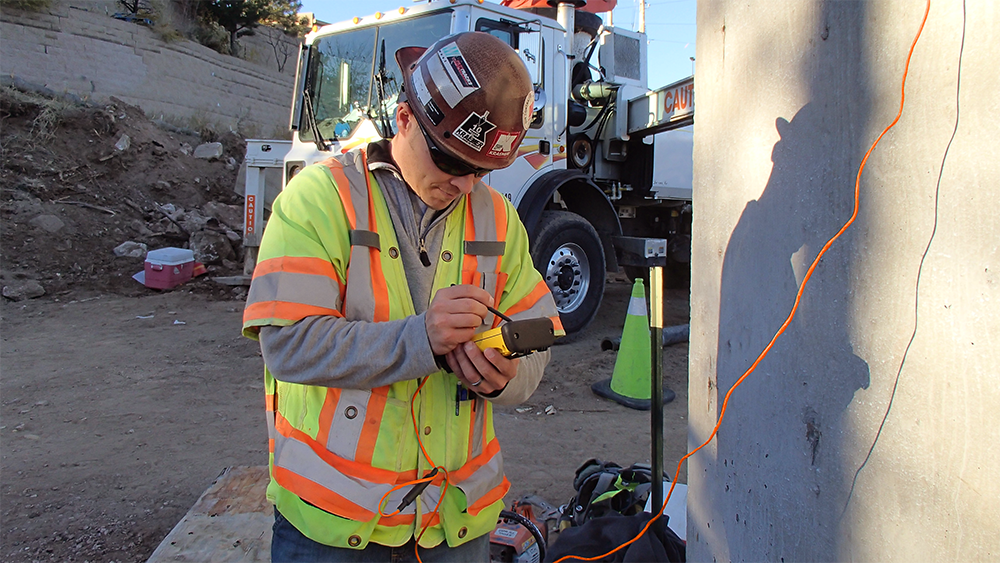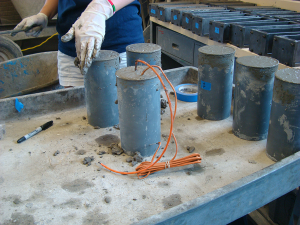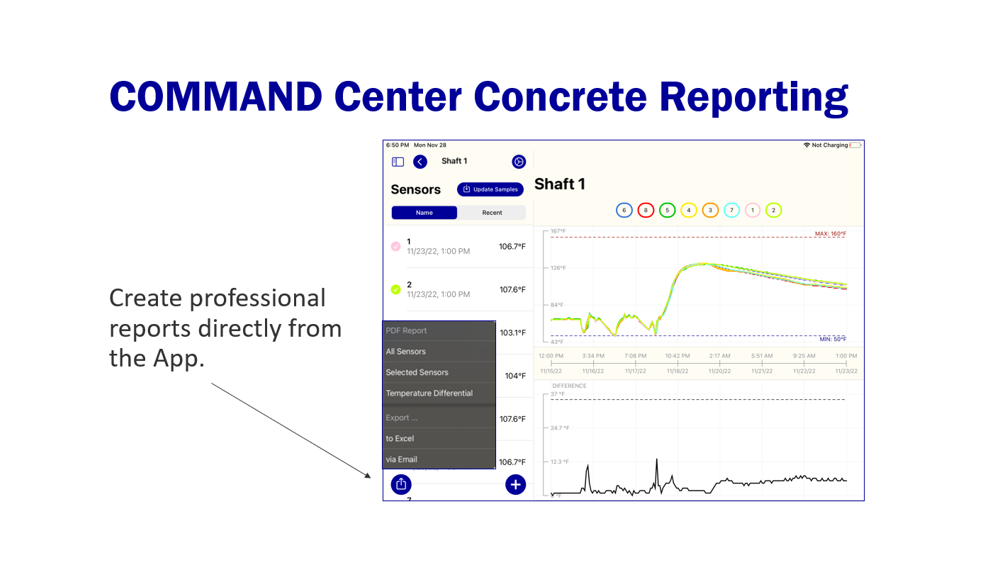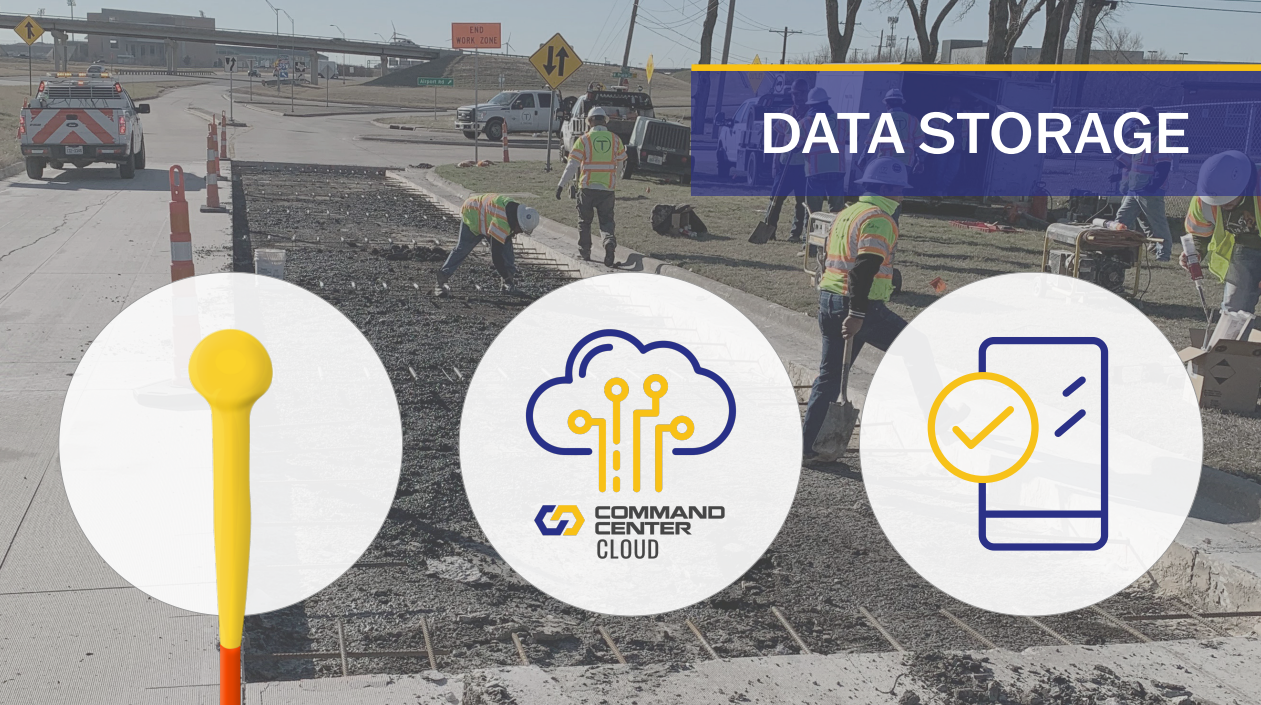
The 2017 Colorado Department of Transportation (CDOT) specifications now require for acceptance the use of the maturity method to determine concrete strength for removal of forms and falsework, loading of piers and abutments, opening of bridge decks and concrete pavement to traffic, and backfilling structures. Previously, CDOT’s specification only required using maturity meters to monitor concrete temperatures in cold weather, and included using maturity as an option for determining curing time for bridge decks, shotcrete applications, and early opening of pavements to traffic.
 Typically, acceptance testing for strength is achieved through flexural or compressive strength tests of beam or cylinder specimens in accordance with standard test methods. It is assumed the test specimens are representative of the same concrete that is placed in the field. If testing of the specimens determines design strength has been achieved, then it is assumed that strength has been achieved in the field, as well. However, assuming that concrete in the field gains strength at the same rate as test specimens is not always the case.
Typically, acceptance testing for strength is achieved through flexural or compressive strength tests of beam or cylinder specimens in accordance with standard test methods. It is assumed the test specimens are representative of the same concrete that is placed in the field. If testing of the specimens determines design strength has been achieved, then it is assumed that strength has been achieved in the field, as well. However, assuming that concrete in the field gains strength at the same rate as test specimens is not always the case.
Concrete maturity is a relationship between concrete temperature, time, and strength gain. It is a nondestructive test method that allows teams to evaluate concrete strength in real-time at their job site. There are many benefits to knowing real-time concrete strength gain including increased safety, expedited construction schedules, and improved construction methods. Knowing in-place concrete strength gain offers assurance that concrete has met adequate strengths for continued construction in cold weather, thus improving overall job safety. Maturity offers the potential to prove concrete has achieved adequate strength sooner than anticipated by acceptance testing alone, leading to stressing tendons, removing formwork, and applying loads sooner, and as a result, expediting construction schedules. Measuring real-time strength gain of in-place concrete can be an indicator of mix consistency and lead to a better-quality product, thereby improving construction methods.
Implementing maturity has other advantages, as well. The method is not dependent on how well an acceptance cylinder or beam was cast and handled, and it does not rely on how well load was applied to the acceptance specimen to determine strength. It is a simple test that requires portable equipment. When implemented correctly, the maturity method has been shown through countless research efforts to work well as a tool for estimating early-age concrete strength gain in the field.
Learn more about how to implement maturity.

See the benefits of maturity in construction projects:
Rogers-O’Brien Construction Slashes Project Time and Costs Using COMMAND Center™
Budget Lowered $3M on Commercial Project in Dallas
Fast Track Patching on I-64 in Williamsburg, Virginia
Several other states include maturity in their specifications for various applications, including Texas, Alabama, Florida, Idaho, Iowa, Kansas, Minnesota, Missouri, Montana, New Mexico, North Carolina, North Dakota, Ohio, Oklahoma, Oregon, Pennsylvania, Utah, Virginia, Washington, West Virginia, and Wisconsin.
CDOT said it will begin using these new specifications on all projects advertised after October 1, 2017.
Other significant changes to CDOT’s specifications include process control and testing requirements for pavements, requirements for earthwork and structure backfill, the use of micro-fiber reinforced concrete, and implementing the Manual for Assessing Safety Hardware. For complete details, visit CDOT’s website.
COMMAND Center™ for Measuring Maturity
COMMAND Center™ allows you to use multiple equations to easily and automatically create a maturity curve, choose between Nurse-Saul and Arrhenius maturity functions, view data in the field to know if you’ve met strength requirements, share data immediately from the field, and create professional PDF reports.
COMMAND Center’s™ state-of-the-art maturity meters come in any length you need and do not require initialization. The system is compatible with multiple readers for reading and analyzing sensor data onsite, and the comprehensive software is free.
Maturity can be confusing at first for teams that are not familiar with or have never used the method. COMMAND Center™ is user-friendly and includes free, in-depth training and high-quality customer support to ease the transition for new customers.
CDOT’s specifications for estimating concrete strength by the maturity method follow ASTM C 1074 and CP 69, for which COMMAND Center™ is compliant.
Download the PDF:
COMMAND Center™ 2.0 System










